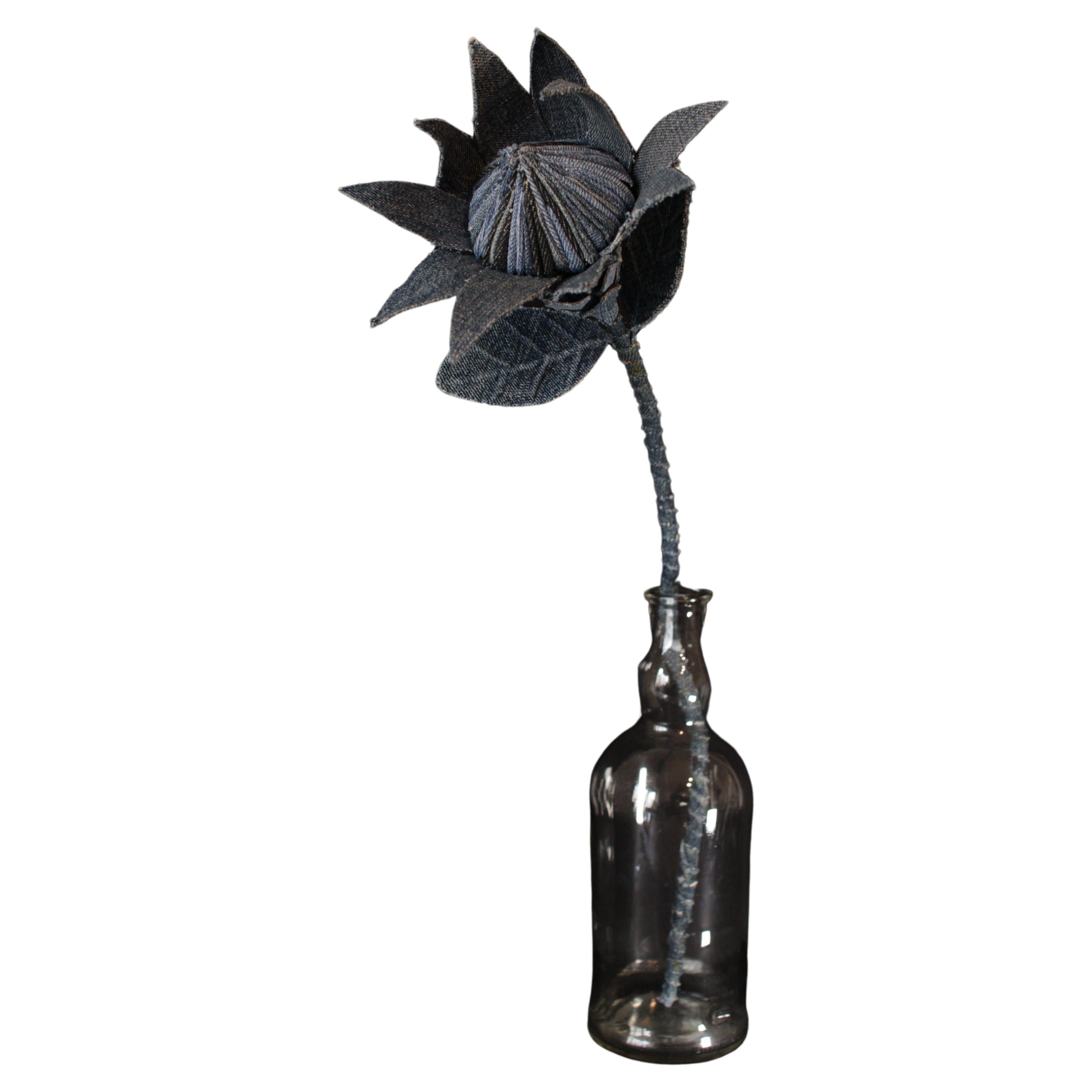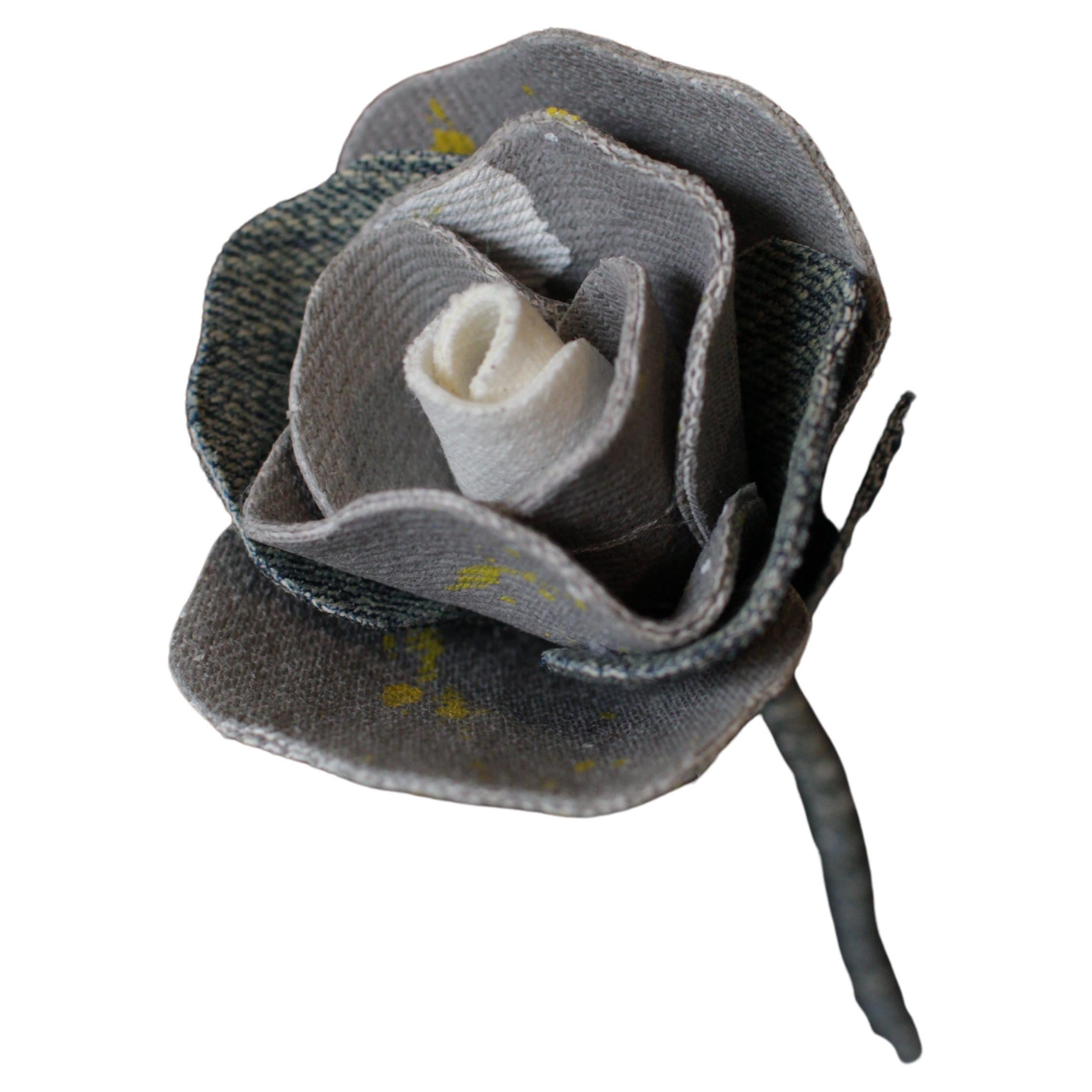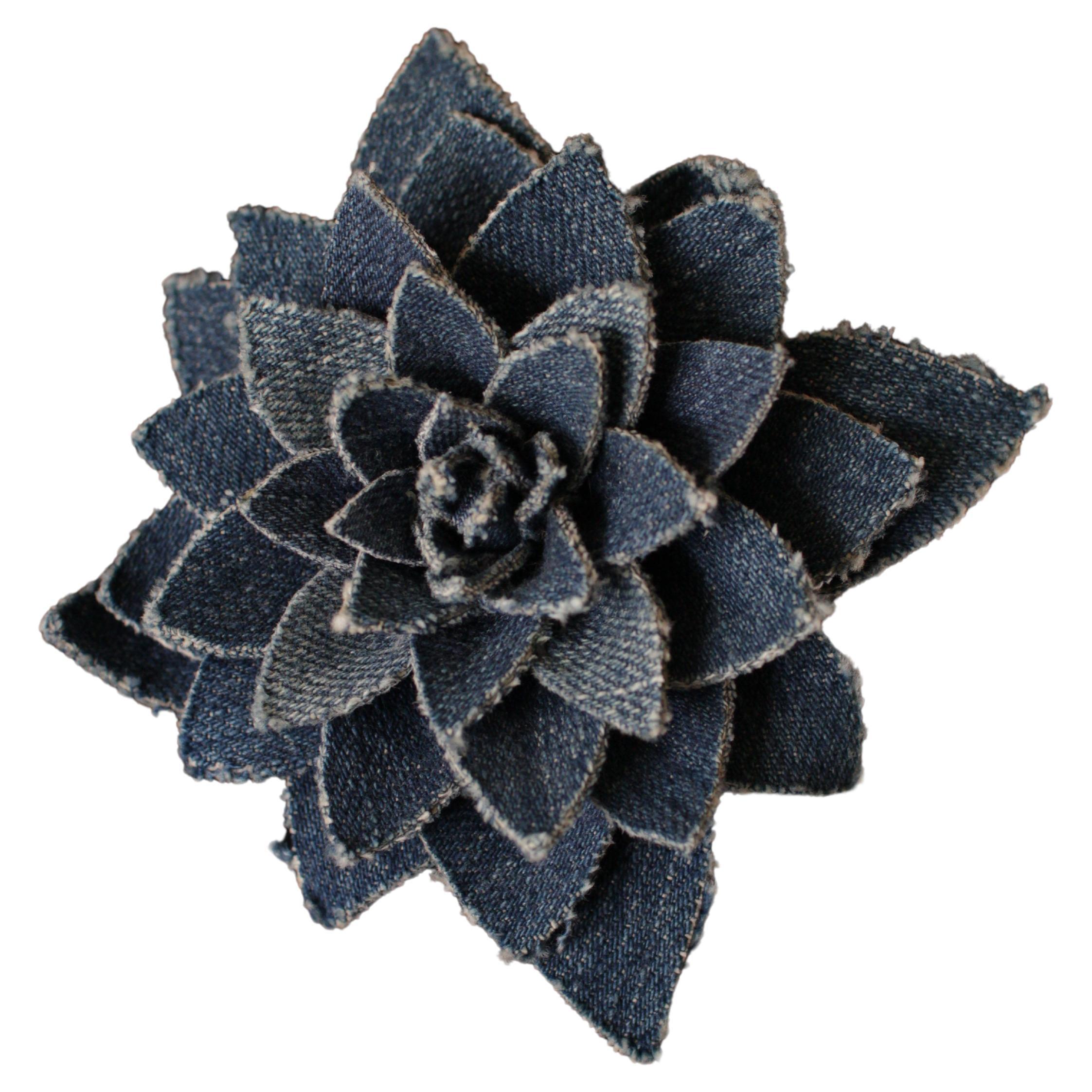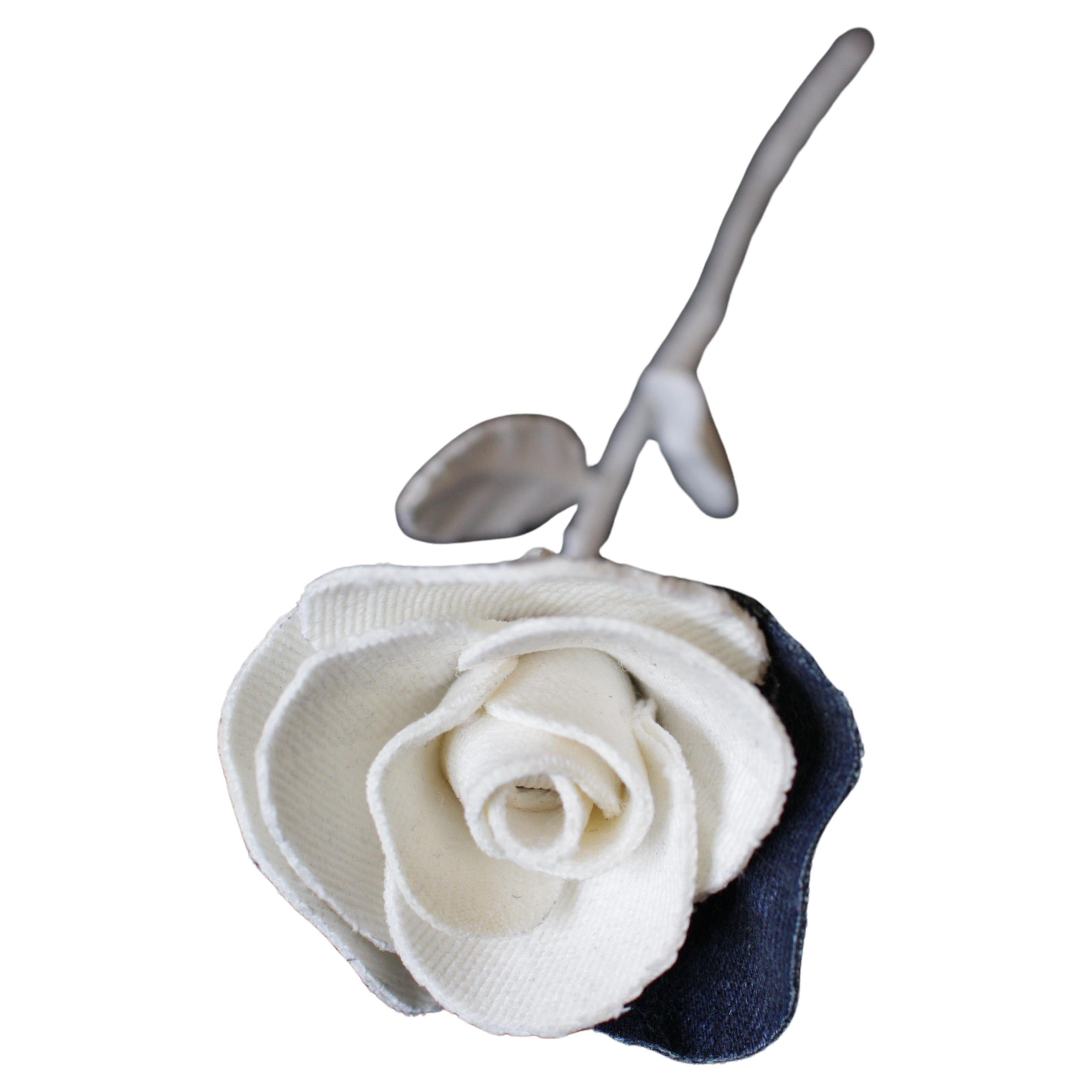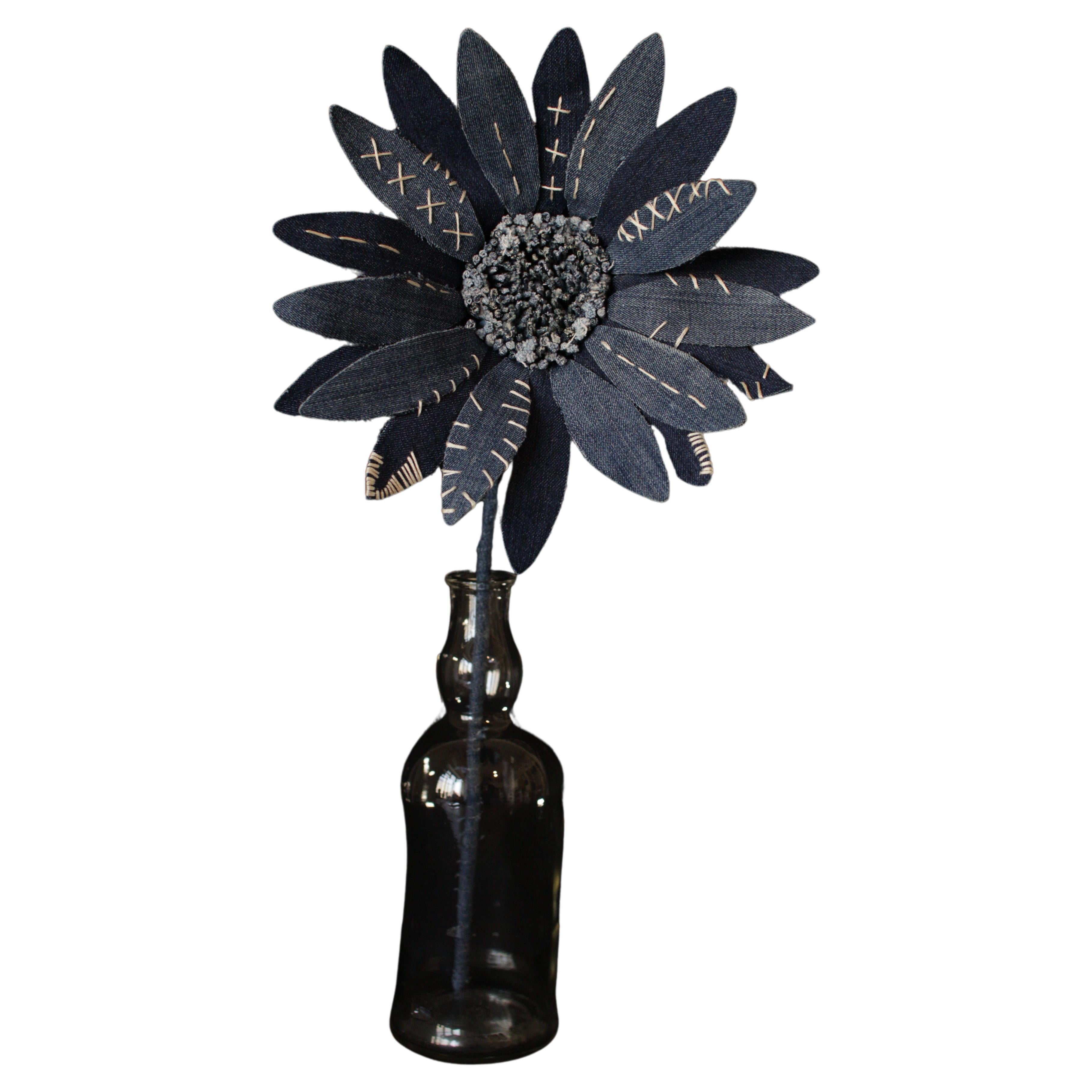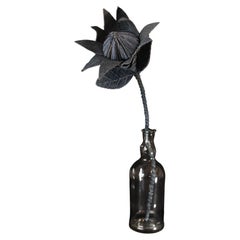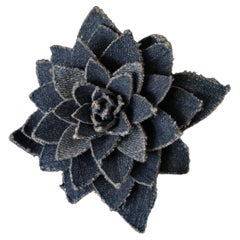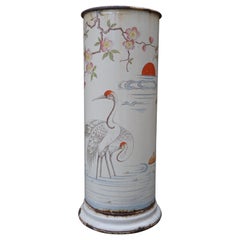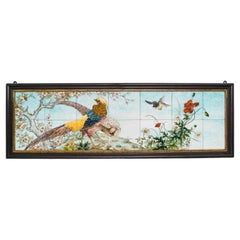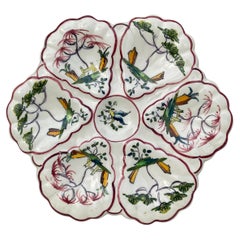Items Similar to Denim Protea1
Want more images or videos?
Request additional images or videos from the seller
1 of 7
Denim Protea1
About the Item
Thick denim flowers made of denim. Each petal is made of a layer of denim, so it has a very massive, and the inside wire allows this flower to be oriented in any direction. It is good to decorate with a single flower in a vase. Good for wall decoration. Good with dried flowers. A tough and rugged expression of the work. How about art flowers for your space?
- Dimensions:Height: 17.33 in (44 cm)Width: 5.12 in (13 cm)Depth: 7.09 in (18 cm)
- Style:Japonisme (In the Style Of)
- Materials and Techniques:
- Place of Origin:
- Period:
- Date of Manufacture:2024
- Production Type:New & Custom(One of a Kind)
- Estimated Production Time:Available Now
- Condition:
- Seller Location:Yokohama, JP
- Reference Number:1stDibs: LU8327239240862
About the Seller
No Reviews Yet
Vetted Seller
These experienced sellers undergo a comprehensive evaluation by our team of in-house experts.
1stDibs seller since 2023
- ShippingRetrieving quote...Ships From: Yokohama, Japan
- Return PolicyA return for this item may be initiated within 14 days of delivery.
Authenticity Guarantee
In the unlikely event there’s an issue with an item’s authenticity, contact us within 1 year for a full refund. DetailsMoney-Back Guarantee
If your item is not as described, is damaged in transit, or does not arrive, contact us within 7 days for a full refund. Details24-Hour Cancellation
You have a 24-hour grace period in which to reconsider your purchase, with no questions asked.Vetted Professional Sellers
Our world-class sellers must adhere to strict standards for service and quality, maintaining the integrity of our listings.Price-Match Guarantee
If you find that a seller listed the same item for a lower price elsewhere, we’ll match it.Trusted Global Delivery
Our best-in-class carrier network provides specialized shipping options worldwide, including custom delivery.More From This Seller
View AllDenim Protea3
By Aoi Shimizu
Located in Yokohama, JP
Thick denim flowers made of denim. Each petal is made of a layer of denim, so it has a very massive, and the inside wire allows this flower to be oriented in any direction. It is goo...
Category
2010s Japanese Japonisme Decorative Art
Materials
Fabric, Canvas, Cotton
$280
Denim Protea2
By Aoi Shimizu
Located in Yokohama, JP
Thick denim flowers made of denim. Each petal is made of a layer of denim, so it has a very massive, and the inside wire allows this flower to be oriented in any direction. It is goo...
Category
2010s Japanese Japonisme Decorative Art
Materials
Fabric, Canvas, Cotton
$280
Denim Rose1
By Aoi Shimizu
Located in Yokohama, JP
Thick denim flowers made of denim. Each petal is made of a layer of denim, so it has a very massive, and the inside wire allows this flower to be oriented in any direction. It is goo...
Category
2010s Japanese Japonisme Decorative Art
Materials
Fabric, Canvas, Cotton
$180
Denim Dahlia4
By Aoi Shimizu
Located in Yokohama, JP
Thick denim flowers made of denim. Each petal is made of a layer of denim, so it has a very massive, and the inside wire allows this flower to be oriented in any direction. It is goo...
Category
2010s Japanese Japonisme Decorative Art
Materials
Fabric, Canvas, Cotton
$220
Denim Rose2
By Aoi Shimizu
Located in Yokohama, JP
Thick denim flowers made of denim. Each petal is made of a layer of denim, so it has a very massive, and the inside wire allows this flower to be oriented in any direction. It is goo...
Category
2010s Japanese Japonisme Decorative Art
Materials
Fabric, Canvas, Cotton
$180
Denim Sunflower
By Aoi Shimizu
Located in Yokohama, JP
Thick denim flowers made of denim. Each petal is made of a layer of denim, so it has a very massive, and the inside wire allows this flower to be oriented in any direction. It is goo...
Category
2010s Japanese Japonisme Decorative Art
Materials
Cotton, Canvas, Fabric
$380
You May Also Like
Large Pop 1970s Wrangler "No-Fault" Jeans. Denim Store Display / Banner
By Denisco
Located in Buffalo, NY
Large pop modernist circa 1970s Wrangler "No-Fault" Jeans and Jackets, silkscreened on Denim, store display / banner, amazing original condition, appears to be new-old stock, Great i...
Category
Vintage 1970s American Mid-Century Modern Decorative Art
Materials
Fabric
Antique Enameled Umbrella and Stick Stand with Hand Painted Japanese Crane Birds
Located in Lisse, NL
Unique Japonisme stick stand with hand painted 'land of the rising sun' decor.
Some chances you only get once in your life and if you are decorating a Japanese (inspired) interior t...
Category
Early 20th Century European Japonisme Umbrella Stands
Materials
Metal, Enamel
Théodore Deck (1823-1891) Faience Paneled Fourteen-Tile Rectangular Wall Plaqu
By Theodore Deck
Located in Saint-Ouen, FR
A Théodore Deck (1823-1891) Faience Paneled Fourteen-Tile Rectangular Wall Plaque
Polychromic Earthenware very finely hand-painted, designed with a couple of pheasants among vegetation, daisies and poppies, a flying swallow symbolizing springtime
Signed TH.DECK to the front of one tile lower left
Circa 1875
In original wooden two patinas frame
Theodore Deck (1823-1891) is a French ceramist born in Guebwiller in Alsace. He is passionate about chemistry and the physical sciences. In 1841, he joined the master stove maker Hügelin father as an apprentice in Strasbourg. In two years, he learned of the methods inherited from the 16th century, such as the encrustation of colored pastes in the style of Saint-Porchaire. This apprenticeship did not prevent him from spending his free time draw-ing or modeling clay in the studio of sculptor André Friederich. Escaping military service, he made a tour of Germany as is the tradition with fellow Alsatian stove-makers. The quality of his work allows him to obtain important orders in Austria for the castles of the provinces and the imperial palaces, in particular for the palace of Schönbrunn. He continues his journey in Hungary to Pest, to Prague, then, going north through Dresden, Leipzig, Berlin and Hamburg. On the strength of his apprenticeship, he arrived in Paris in 1847. Recommended by Hügelin, he went to the stove factory of the Bavarian potter Vogt, located rue de la Roquette. The Revolution of 1848 interrupts production and Deck decides to return to his hometown. His family then advised him to set up a small terracotta workshop: he made a few busts, statuettes, vases, lamps and copies of famous antiques there. Aware that this situation would not allow him to provide for himself properly, he returned to Paris in 1851 where he was employed by the widow Dumas, daughter of the earthenware maker Vogt for whom he had worked. Hired as a foreman, he supplied the drawings and models to the workers, while working the land himself.
The following year, he made the decision to settle not far from his former employer at 20, rue de la Fontaine-au-Roi, probably using his ovens. His brother, Xavier Deck, joins him. It was officially in 1858 that the Deck brothers created their business and settled in Paris at 46, boulevard Saint-Jacques. Initially, the brothers only carry out coatings for stoves. But the business is going so well that barely a year after their installation, they want to diversify their production and engage in ceramics for the cladding of buildings as well as in shaped parts. Deck is interested in politics. In 1870, he opted for French nationality and was elect-ed deputy mayor in the 15th arrondissement of Paris.
In 1861, at the Salon des arts et industries de Paris, which was held on the Champs-Élysées, Théodore Deck exhibited his works for the first time: these were pieces with an inlay decoration called “Henri II” and others. pieces covered with turquoise blue enamel or decoration in the style of Iznik ceramics.If he wins a silver medal, reviews are mixed, however. The following year, on the occasion of the Universal Exhibition of 1862 in London, he won over English customers. He surprised by presenting, like the previous year, his Alhambra Vase of exceptional dimensions (1.36 m in height and 2.25 m in circumference) which was purchased by the South Kensington Museum a few years later. At this same exposure, however, we notice the numerous cracks in its glaze and its poor adhesion to the dough. At the Indus-trial Arts Exhibition of 1864, Deck managed to present pieces coated with transparent, non-cracked enamels, and then made his first attempts at reliefs under transparent enamels. He developed a bright turquoise colour, which he named "Bleu Deck".
Théodore Deck explained the manufacture and qualities of these transparent enamels when he published his treatise La faïence in 1887. A year later, he made the first tests of reliefs in transparent enamels. He will never abandon this technique which will also be taken up by a number of large manufacturers. Inspired to pastiche by Islamic, Egyptian, Chinese, Japanese ceramics or majolica, he makes characters, birds, flowers, ornaments of all kinds evolve under a turquoise, green, yellow or manganese glaze. It is above all a characteristic blue that the public retains from this technique: a dazzling turquoise shade that it immediately adopts under the name of Bleu de Deck or Bleu Deck.
Théodore Deck continues to innovate, on the occasion of the Universal Exhibition of 1867, the factory received a silver medal thanks, among other things, to the metallic reflections it obtained on certain pieces. If these exhibitions become the engine of these technical advances, they nonetheless represent heavy expenses. In 1869, Théodore Deck opened a sales store on rue Halévy in the Parisian district of the Opera , which was run by his sister. On the occasion of the 1873 World's Fair in Vienna, he presented a spectacular two-meter-wide planter, leaning against a panel nearly four meters high. The whole, kept in Geneva at the Ariana Museum, was made from the drawings of Émile-Auguste Reiber.
Théodore Deck was appointed in 1875 at the head of the improvement commission of the Manufacture de Sèvres. As soon as they settle in, the Deck brothers bring together their artist friends at home and set up a principle of collaboration. Following this principle, Deck makes dishes, tiles or plates (very rarely vases) that he gives to paint to artists who have for many already proven themselves at the Salon. The sales gains are divided into two equal parts. Deck also trains apprentices who will in turn go to school. The most famous of them, Edmond Lachenal, will continue the work of the great ceramist by developing his art in the spirit of Art Nouveau. Author of a masterful treatise on earthenware, he became in 1887 - supreme recognition - director of the National Manufacture of Sèvres and left to his brother Xavier, as well as his nephew Richard, the management of their company. He produced soft porcelain there and, by improving the manufacturing technique, succeeded in giving them grandiose dimensions, covering them with his celadon glazes and turquoise blue. Théodore Deck has been resting since 1891 in Paris in the Montparnasse cemetery. It was his friend Auguste Bartholdi who made his funeral monument...
Category
Antique 1870s French Japonisme Decorative Art
Materials
Faience, Wood
$31,889 Sale Price
20% Off
French Faience Oyster Plate Moustiers Style, circa 1940
By Martres Tolosane
Located in Austin, TX
French Faience Oyster Plate Moustiers Style, circa 1940.
Martres Tolosane.
Japonisme style.
Category
Vintage 1940s French Japonisme Dinner Plates
Materials
Faience
Japanese Antique Silk and Cotton Tapestry
Located in Milano, IT
Wonderful and very rare Japanese tapestry made in the 1900s, made of woven silk and cotton, of absolute fineness.
The tapestry is developed in length ...
Category
Antique Early 1800s Japanese Japonisme Decorative Art
Materials
Fabric, Silk
$2,562 Sale Price
25% Off
Collection of Five Japanese Oshi-E Textile Art Panels Meiji Period
Located in Atlanta, GA
On offer is a set of five Japanese textile art panels called Oshi-E circa Meiji Period (1868-1912). This usual set of panels depict various aspects of daily life in Edo time with beautiful details. Some of these panels are snapshots of the buzzling commercial activities at the marketplace, providing insight into the signages, architecture, costumes and how people interacted within a historical and pictorial context. Other panels depict daily leisure activities such as lounging in the park or visiting friends. The realistic rendering and attention to details are not short of "photographic" quality. From the signage of the shops to the motions and attires of the individual characters, from the hairstyle, small ornaments, down to the facial expression, were all recorded in great details. Each panel was signed with the artist's name Yukihana in Kanji with a red seal.
These panels are unframed and await your custom touch (framing with inner gilt spacer and mat costs about 250-500 depending on the material chosen, see a framed example in the last picture of a single framed panel we have for sale). We offer them for sale individually, but it will be great for a collector to consider the whole set so that they can stay together.
The Oshi-E (also known as kiritori zaiku) is a type of ornamental textile art dated back to the Muromachi period (1392-1573). It started among the elite aristocratic women in Kyoto before spreading wider in the Japanese society. Throughout Edo and Meiji period, Oshi-E were sometimes used to make offerings to the altars in the temple and in the late 19th century, it was exported to the west along with the other embroidery textile art. Oshi-E was made by using silk wadding to create a relief design. Various silk fabric swaps and sometimes wires and tassels, often recycled from older kimonos...
Category
Antique 1890s Japanese Japonisme Textiles
Materials
Silk, Giltwood
Recently Viewed
View AllMore Ways To Browse
Japanese Japan Denim
Massive Japanese Vase
Palissy M
Poland Eagle
Rex Light
Schumacher Chinois
Wheat Wall Hanging
Zodiac Tile
1920s Bathing Suit
1920s Swimsuit
Architectual Art
Capron Plaque
Chinois Wallpaper
Decorative Blackboard
Diana Wall Deco
Framed Dried Botanicals
French Plaster Decorative Wall Plaque
Guess Watch Vintage
